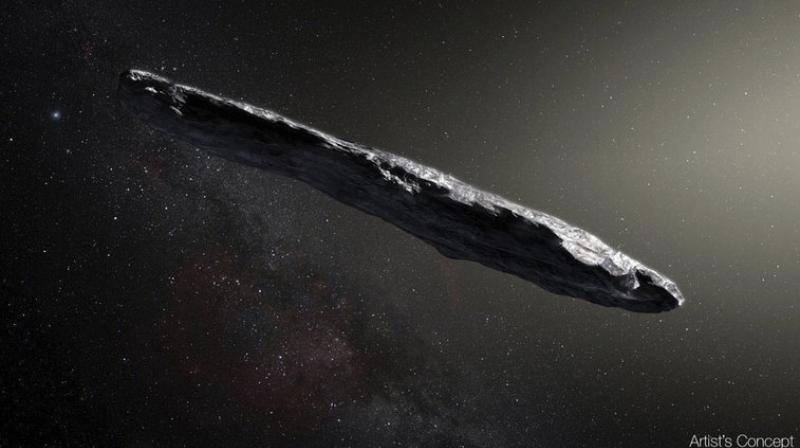Comet or asteroid? Scientists ID interstellar visitor

Last year’s visitor from another star system — a cigar-shaped object riefly tumbling through our cosmic neck of the woods — has now been identified as a comet.
A European-led team makes the case in Wednesday’s edition of the journal Nature.
Telescopes first spotted the mysterious red-tinged object last October as it zipped through the inner solar system. Since then, astronomers have flip-flopped between comet and asteroid for our first confirmed interstellar guest.
Neither a coma nor tail was spotted, hallmarks of an icy comet. But Italian astronomer Marco Micheli and his team reported that the object’s path and acceleration are best explained not just by gravity, but also gases shedding from a comet.
The release of what’s believed to be gaseous carbon monoxide, carbon dioxide and water applied only a tiny force on the object known as Oumuamua — about 1,000 times smaller than the effect of the sun’s gravity — and barely altered its path, the researchers said.
But the team’s measurements “were so precise that we could actually see the change in position caused by the outgassing,” said co-author Paul Chodas, manager of NASA’s Center for Near-Earth Object Studies at Jet Propulsion Laboratory in Pasadena, California.
“It’s a definitely exciting discovery,” said Micheli of the European Space Agency.
Micheli said computer models suggest objects typically are ejected during the formation of planetary systems, and that most of these castaways should be comets given their location on the frigid outskirts of their systems. Only a tiny fraction should be asteroids, by scientists’ best calculations.
Had it been an asteroid, it would have been “extremely lucky to beat these odds” — or it would have underscored scientists’ misunderstanding of the early solar system, Micheli said.
Discovered by a telescope in Hawaii, Oumuamua is Hawaiian for a messenger from afar arriving first, or scout.
It’s long gone, as are the chances of knowing conclusively what it was.
The University of Toronto’s Alan Jackson, who reported in March that Oumuamua likely came from a two-star system, remains unconvinced of its true identity.
“But this is certainly an interesting new piece of information for us to chew on,” he said in an email.
Click on Deccan Chronicle Technology and Science for the latest news and reviews. Follow us on Facebook, Twitter.

